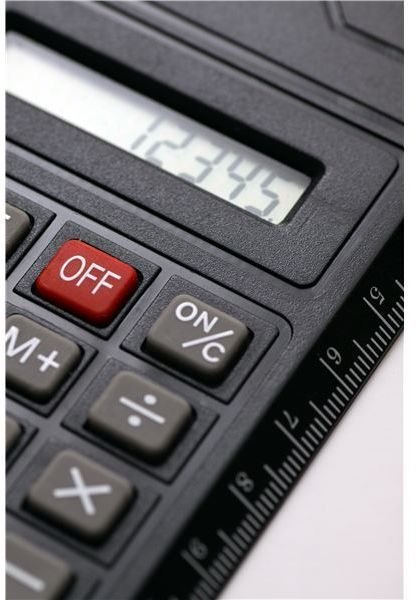Break-Even Analysis Example: A How-to Guide
The indispensable Break Even Analysis
The ability to identify the break-even point, the point at which revenues will just cover all your costs, is essential for any business. Before opening a business this study is important to determine if the venture will be profitable and is included in the business plan. An established business will use this tool as it considers whether to change the price of a product, expand, or take on new debt.
Don’t let apprehension over creating a break-even analysis cause you to avoid this fundamental analysis altogether. Follow the step-by-step guidelines used in the following break-even analysis example to prepare your own calculations.
An Example
A simplified example for a bakery will be used to illustrate the process of identifying the break-even point. The process that is undertaken below is based on the fact that business is complicated. Many types of products and services are likely offered. There are quite a few steps in the process, but the calculations are not difficult. The hard part is making good estimates and assumptions. The example covers an entire year so that seasonal fluctuations are taken into account.
1. Estimate Sales Revenue
Make your best guess regarding what sales revenue will be for an entire year. Make an educated guess by considering research obtained during the start-up phase and consult with trade associations that would be willing to share industry benchmarks. For our example, the bakery is expected to have $300 in sales for every square foot of space. My Delicious Bakery has 1,000 square feet and therefore estimates that yearly revenue will be $300,000.
Next, break the revenue down according to categories of products that will be sold and calculate the amount of revenue that will be generated in each area. This step is necessary when the costs associated with various categories of sales items are different. The more tightly the categories are defined, the better the analysis will be.
My Delicious Bakery expects to sell three types of items that are likely to have different cost structures. Total revenue ($300,000) is allocated to each category using the percentages indicated. Multiply the percent for each category to total revenue to determine the revenue by category:
Wedding Cakes 70% x $300,000 = $210,000
Cookies 20% x $300,000 = $60,000
Fudge 10% x $300,000 = $30,000
2. Calculate Unit Contribution Margin for Product Categories
Unit contribution margin is calculated by subtracting the variable costs incurred to produce an item from the sales price of an item. (Note that the term contribution margin and gross profit can be used interchangeably.) Variable costs are directly associated with the item that is being sold. For a product, it will include the cost to produce an item or purchase it from a manufacturer. It will not include rent and utilities for the space where the product is made. The latter are overhead costs which will be considered later. The equation to calculate contribution margin is: Sales Price - Variable Costs = Contribution Margin
My Delicious Bakery plans to sell wedding cakes, pies, and fudge. The contribution margin for each unit sold is:
Wedding Cakes: $500 - $100 = $400
Pies: $25 - $10 = $15
Fudge: $4 - $1 = $3
3. Calculate the Contribution Margin Ratio for Product Categories

The contribution margin ratio identifies how much of each sales dollar is available to cover other costs and provide a profit.
The equation is: Contribution margin / Selling Price = Contribution Margin Ratio
Wedding Cakes: $400 / $500 = 80%
Pies: $15 / $25 = 60%
Fudge: $3 / $4 = 75%
4. Calculate Annual Contribution Margin by Category
Using the estimates of sales by category identified in Step 1, calculate annual contribution margin for each category.
The equation for each product category is: Sales Revenue x Contribution Margin Ratio = Contribution Margin.
Wedding Cakes: $210,000 x 80% = $168,000
Pies: $60,000 x 60% = $36,000
Fudge: $30,000 x 75% = 22,500
5. Calculate Contribution Margin Ratio for the Entire Business
As discussed in step 3, the contribution margin ratio represents contribution margin divided by total sales.
First, we need to add the contribution margin for wedding cakes, pies, and fudge: $168,000 + $36,000 + $22,500 = $226,500.
Finally, divide the combined contribution margin for all categories by total estimated sales revenue to arrive at the contribution margin ratio for the business as a whole. In our example, the calculation is: $226,500 / $300,000 = 75.5%
6. Identify Fixed Costs
Fixed costs represent costs that are incurred regardless of whether any service is rendered or any items are sold. They are also referred to as overhead costs. Examples include rent, utilities, advertising, and wages for a clerk. (Note that wages for someone that assembles a product would be a variable cost.) In our example, total fixed costs for an entire year are: $100,000.
7. Calculate the Break Even Point
The break-even point = annual fixed expenses / contribution margin ratio for the entire business.
The dollar amount that results represents the amount of sales revenue that is needed to cover all the costs of doing business.
The calculation for My Delicious Bakery is as follows: $100,000 / 75.5% = $132,450.33.
8. Analyze the Results
If the break-even point is larger than the estimated revenue determined in step 1, then you will make a profit!
Consider the outcome for My Delicious Bakery:
Estimated revenue - Break Even Point = Excess Revenues
$300,000 - $132,450 = $167,550
Excess Revenues x Contribution Margin Ratio = Pre-tax Profit
$167,550 x 75.5% = $126,500
Proceed cautiously as you analyze the results of the break-even analysis. The numbers are based upon estimates, and it is tempting to redo the analysis with different figures. Be sure to have a concrete reason for adjusting a number. For example, if you identify a way to reduce costs, then adjust the numbers appropriately. Be extremely careful when adjusting revenue estimates to fit a preconceived expectation.
Image Credit:
Signs: https://www.sxc.hu/browse.phtml?f=download&id=1290132
Calculator: https://www.sxc.hu/photo/1264906
Reference: Kimmel, Paul D., Jerry J. Weygandt, and Donald E. Kieso. Financial Accounting: Tools for Business Decision Making. New York, NY: Wiley, 2008. Print.
